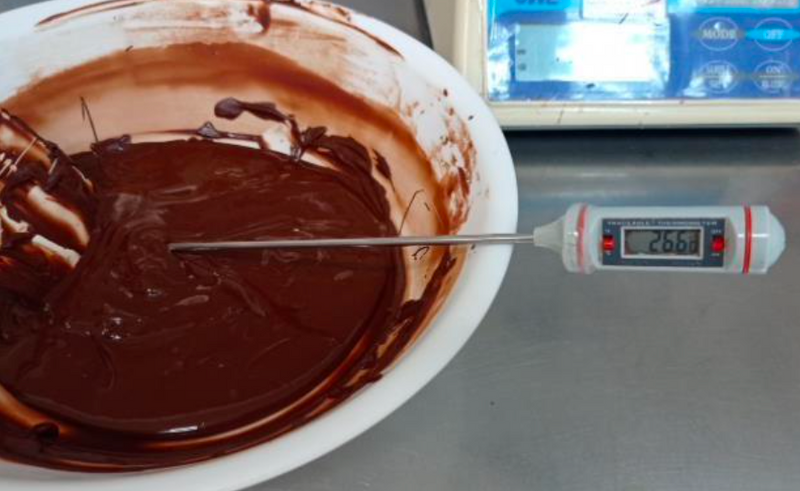Tempering Report: Dark Chocolate Wafers with Coconut Palm Sugar
1. General Information
-
Product: Dark Chocolate Wafers with Coconut Palm Sugar
-
Purpose: To demonstrate proper chocolate tempering techniques and provide recommendations for achieving optimal results.
2. Objectives
-
Ensure successful tempering of chocolate for a smooth, glossy finish and proper snap.
-
Offer guidance on refining the tempering process to achieve consistent results.
3. Tempering Process
Melting the Chocolate
-
Use a microwave at 50% power to gradually melt the chocolate wafers.
-
Heat in 15-20 second increments, stirring between each interval to avoid overheating.
-
Target temperature range: 40-45°C (104-113°F).
- Avoid exceeding 50°C (122°F), as cocoa butter burns at this temperature.

Cooling the Chocolate
Once fully melted, allow the chocolate to cool to 25-27°C (77-80°F).
This can be accelerated by placing the bowl in a refrigerator or freezer for a short time.

Reheating to Working Temperature
-
Gently reheat the chocolate to 30-32°C (86-89°F).
-
Ensure the mold used for pouring the chocolate is within the same temperature range. Using a mold that is too warm or too cool can cause tempering issues.

Molding the Chocolate
-
Pour the chocolate into the mold, ensuring an even distribution.
-
Lightly tap or vibrate the mold to remove air bubbles and allow the chocolate to spread evenly.
-
Let the chocolate set before unmolding.

4. Results
-
The chocolate releases cleanly from the mold without leaving residue.
-
A smooth, uniform finish is achieved with proper tempering.
-
The chocolate exhibits a glossy appearance and a firm structure.

5. Conclusions and Recommendations
-
Follow the established tempering temperature curve to maintain consistency.
-
Ensure molds are completely dry before use, as moisture can disrupt tempering.
-
Use a thermometer to monitor temperatures closely throughout the process.
-
When cooling, avoid rapid temperature drops, as this can cause undesirable texture changes.

By following these steps, the tempering process yields high-quality results, ensuring properly structured chocolate with an appealing texture and finish.


